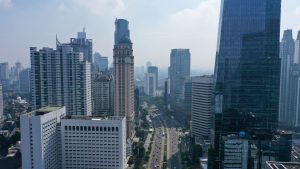Investment involves risk. The return the investor expects to receive is what justifies the risk. The higher the expected return, the higher the risk. This is a fundamental concept in economics and business. When it comes to global financial flows, especially in emerging markets, this equation is sometimes altered. Investors want high returns to be had in emerging markets, but they also want to lower their risk of exposure. Often, the state is the one expected to “de-risk” the investment, either through direct or indirect guarantees.
What kind of risks are we talking about? An obvious one is exchange rate risk, where income-generating assets denominated in local currencies become less valuable to foreign investors if the currency starts depreciating. Other risks include the potential for default, or otherwise being unable to recoup an investment because of poor business conditions or bureaucratic or political roadblocks.
Basically, foreign investors may be hesitant to put their money in an emerging market because of fear that, should things go sideways, they won’t be able to get it out. This can make it difficult to attract foreign investment at a large scale and inhibit the ability to finance capital-intensive projects like roads, power plants, and so forth.
The global financial system has developed a solution for this problem, however. In order to attract foreign capital, emerging markets frequently offer high rates of return, while the state is often expected to explicitly or implicitly guarantee the investment.
This is where the term “de-risking state” comes from (or as Professor Daniela Gabor terms it, the Wall Street Consensus) and it deviates from the classic risk-reward calculus that typically determines investment decisions under ideal market conditions. When the state de-risks a project, it means investors can still enjoy high rates of return, but the state is now absorbing some or all of the risk.
There are different ways that a state can de-risk investment. One is through an explicit guarantee. You often see this in major infrastructure projects, where the state will guarantee the liabilities incurred from foreign investors or lenders in order to make sure the project goes forward. Indonesia has an infrastructure guarantee fund specifically for this purpose, and it has been used often during the Jokowi era to speed up major infrastructure projects like toll roads.
Subsidies are another form of de-risking because the state offers incentives to consumers in order to ensure there is a market for certain products. We see this a lot these days with things like electric vehicles. Under ideal market conditions, it should be the EV-makers who bear the risk of insufficient demand, but investment in clean energy is considered too important to wait for the market to catch up. So, the state steps in and speeds things up.
States also de-risk investment through implicit guarantees. In emerging markets, this often occurs through state-owned enterprises (SOEs). It is highly unlikely that the state will let a major SOE go under, which means that even without a formal government guarantee states have an incentive to make sure projects involving SOEs are successful, and are also likely to save SOEs from insolvency. Forming joint ventures or co-investing in or with an SOE can, in many cases, be considered a form of implicit state de-risking.
De-risking is going to play a big role in the Just Energy Transition Partnerships being rolled out in Southeast Asia. These are multi-billion-dollar funds earmarked for investment in clean energy and early retirement of coal-fired power plants in Indonesia and Vietnam. Half the funds are expected to come from the private sector at market rates, and it seems likely that a major sticking point will be how the risk is allocated.
Will the deals be denominated in local currency or foreign currency? If foreign, it means the exchange rate risk will be shifted from the investors onto state-owned electric utilities (the utilities collect revenue from customers in local currency, so if they have to pay investors in foreign currency, they will take losses if the local currency depreciates). Will investors seek explicit government guarantees? If so, it will again shift more risk onto the state when under ideal market conditions this risk should already be priced in and borne by the investors.
Does this mean states should never de-risk private investment? Of course not. States absorbing risk is often justified, especially in service of urgent development objectives or where market failures are likely. But when the state agrees to absorb risk from the private sector, it should do so according to some kind of strategic logic and seek to minimize the risk while bargaining for favorable terms in exchange. Most importantly, the allocation of risk needs to be acknowledged for what it is: a conscious and often difficult decision made by human beings, and one that carries both upsides and downsides.

































